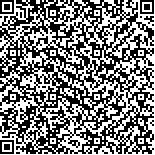| Quote
: |
王璇,李擎虎.溃结宁膏对慢性非特异性溃疡性结肠炎大鼠血清中炎症因子及结肠组织GFAP、BDNF的影响[J].湖南中医药大学学报英文版,2022,42(1):44-48.[Click to copy
] |
|
| |
|
|
| This paper
:Browser 1742times Download 482times |
| 溃结宁膏对慢性非特异性溃疡性结肠炎大鼠血清中炎症因子及结肠组织GFAP、BDNF的影响 |
| 王璇,李擎虎 |
| (湖南中医药大学第二附属医院, 湖南 长沙 410005) |
| 摘要: |
| 目的 研究溃结宁膏对于大鼠血清中白细胞介素-1β(interleukin-1β,IL-1β)、白细胞介素-6(interleukin-6,IL-6)、肿瘤坏死因子-α(tumor necrosis factor,TNF-α)和结肠组织中胶质纤维酸性蛋白(glial fibrillary acidic protein,GFAP)、脑源性神经营养因子(brain derived neurophic factor,BDNF)的影响。方法 选用健康雄性2月龄SD大鼠48只,随机分为空白组、模型组、水杨酸柳氮磺胺吡啶组、溃结宁膏组,每组12只,采用3% DSS间断性喂养建立慢性非特异性溃疡性结肠炎模型,溃结宁膏组选取“中脘”“气海”“足三里”“天枢”及“脾俞”穴位贴敷,连续治疗21 d。治疗后第1~3周周末观察大鼠体质量变化,进食、活动及粪便情况,并计算结肠组织疾病活动指数(disease activity index,DAI);HE染色观察各组大鼠结肠组织病理变化情况;ELISA法检测各组大鼠血清中IL-1β、IL-6、TNF-α含量;蛋白免疫印迹法检测各组大鼠结肠组织中GFAP、BDNF蛋白表达。结果 在治疗的第7、14、21天,溃结宁膏组大鼠的DAI评分均明显低于模型组(P<0.01)。电镜下,溃结宁膏组大鼠结肠组织病理改变恢复,炎性浸润减轻。与模型组比较,溃结宁膏组大鼠血清中IL-1β、IL-6、TNF-α含量明显降低(P<0.01);结肠组织中GFAP蛋白表达明显降低,BDNF蛋白表达明显升高(P<0.01)。结论 溃结宁膏可能通过减轻血清中炎性因子的表达、调控肠神经系统、修复肠壁神经丛和保护肠黏膜,减轻结肠组织病理性损伤,从而缓解慢性非特异性溃疡性结肠炎的临床症状、降低DAI。 |
| 关键词: 慢性非特异性溃疡性结肠炎 溃结宁膏 白细胞介素-1β 白细胞介素-6 肿瘤坏死因子-α 胶质纤维酸性蛋白 脑源性神经营养因子 疾病活动指数 |
| DOI:10.3969/j.issn.1674-070X.2022.01.009 |
| Received:May 26, 2021 |
| 基金项目:湖南省中医药科研计划项目(201942,D2022096)。 |
|
| Effect of Kuijiening Ointment on inflammatory factors in serum and GFAP and BDNF in colon of rats with chronic nonspecific ulcerative colitis |
| WANG Xuan,LI Qinghu |
| (The Second Affiliated Hospital of Hunan University of Chinese Medicine, Changsha, Hunan 410005, China) |
| Abstract: |
| Objective To study the effects of Kuijiening Ointment on interleukin-1β (IL-1β), interleukin-6 (IL-6), tumor necrosis factor-α (TNF-α) in rat serum and glial fibrillary acidic protein (GFAP) and brain derived neurotrophic factor (BDNF) in colon tissue. Methods 48 healthy male SD rats of 2 months old were selected and randomly divided into blank group, model group, salicylic acid sulfasalazine (SASP) group, Kuijiening Ointment group, 12 rats in each group, a chronic nonspecific ulcerative colitis model was established with intermittent feeding using 3% DSS. The Kuijiening Ointment group selected "Zhongwan (RN12)", "Qihai (RN6)", "Zusanli (ST36)", "Tianshu (ST25)" and "Pishu (BL20)" acupoint application for 21 days. In the 1st to 3rd week after treatment, the changes in body weight, eating, activity and feces of the rats were observed, and the disease activity index (DAI) of colon tissue was calculated; HE staining was used to observe the pathological changes of the colon tissue of rats in each group; ELISA method was used to detect the serum levels of IL-1β, IL-6 and TNF-α in each group of rats; Western blot method was used to detect the expression of GFAP and BDNF protein in the colon tissue of each group of rats. Results On the 7, 14, and 21 days of treatment, the DAI score of the Kuijiening Ointment group was significantly lower than that of the model group (P<0.01). Under electron microscope, the pathological changes of the colon tissue of the rats in the Kuijiening Ointment group recovered, and the inflammatory infiltration was reduced. Compared with model group, the serum levels of IL-1β, IL-6 and TNF-α in the Kuijiening Ointment group were significantly reduced (P<0.01); the expression of GFAP protein in the colon tissue was significantly reduced, and the expression of BDNF protein was significantly increased (P<0.01). Conclusion Kuijiening Ointment may relieve the clinical symptoms and decrease DAI of chronic non-specific ulcerative colitis by reducing the expression of serum inflammatory factors, regulating the enteric nervous system, repairing the nerve plexus of the intestinal wall, protecting the intestinal mucosa, and reducing the pathological damage of the colon tissue. |
| Key words: chronic nonspecific ulcerative colitis Kuijiening Ointment interleukin-1β interleukin-6 tumor necrosis factor-α glial fibrillary acidic protein brain derived neurotrophic factor disease activity index |
|

二维码(扫一下试试看!) |
|
|
|
|


